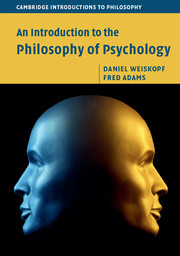48 results
A scoping review of the conceptualisations of food justice
-
- Journal:
- Public Health Nutrition / Volume 26 / Issue 4 / April 2023
- Published online by Cambridge University Press:
- 23 January 2023, pp. 725-737
-
- Article
-
- You have access
- Open access
- HTML
- Export citation
The treatment of mental illness in faith-based and traditional healing centres in Ghana: perspectives of service users and healers
-
- Journal:
- Global Mental Health / Volume 7 / 2020
- Published online by Cambridge University Press:
- 14 October 2020, e28
-
- Article
-
- You have access
- Open access
- HTML
- Export citation
Empty Names and Pragmatic Implicatures
-
- Journal:
- Canadian Journal of Philosophy / Volume 37 / Issue 3 / September 2007
- Published online by Cambridge University Press:
- 01 January 2020, pp. 449-461
-
- Article
- Export citation
Soil Properties Influence Saflufenacil Phytotoxicity
-
- Journal:
- Weed Science / Volume 62 / Issue 4 / December 2014
- Published online by Cambridge University Press:
- 20 January 2017, pp. 657-663
-
- Article
- Export citation
Sorption of Simazine and S-Metolachlor to Soils from a Chronosequence of Turfgrass Systems
-
- Journal:
- Weed Science / Volume 61 / Issue 3 / September 2013
- Published online by Cambridge University Press:
- 20 January 2017, pp. 508-514
-
- Article
- Export citation
Efficacy of Application Placement Equipment for Tall Fescue (Lolium arundinaceum) Growth and Seedhead Suppression
-
- Journal:
- Weed Technology / Volume 21 / Issue 3 / September 2007
- Published online by Cambridge University Press:
- 20 January 2017, pp. 801-806
-
- Article
- Export citation
Glyphosate Spray Drift Management with Drift-Reducing Nozzles and Adjuvants
-
- Journal:
- Weed Technology / Volume 20 / Issue 4 / December 2006
- Published online by Cambridge University Press:
- 20 January 2017, pp. 893-897
-
- Article
- Export citation
Solving the Grid-to-Ground Problem when Using High Precision GNSS in Archaeological Mapping
-
- Journal:
- Advances in Archaeological Practice / Volume 2 / Issue 2 / May 2014
- Published online by Cambridge University Press:
- 16 January 2017, pp. 138-143
-
- Article
- Export citation
Price Determination in the U.S. Shrimp Market
-
- Journal:
- Journal of Agricultural and Applied Economics / Volume 19 / Issue 2 / December 1987
- Published online by Cambridge University Press:
- 05 September 2016, pp. 103-111
-
- Article
- Export citation
Contributors
-
-
- Book:
- The Cambridge Dictionary of Philosophy
- Published online:
- 05 August 2015
- Print publication:
- 27 April 2015, pp ix-xxx
-
- Chapter
- Export citation
Contributors
-
-
- Book:
- Clinical Gynecology
- Published online:
- 05 April 2015
- Print publication:
- 23 April 2015, pp viii-xiv
-
- Chapter
- Export citation
References
-
- Book:
- An Introduction to the Philosophy of Psychology
- Published online:
- 28 May 2018
- Print publication:
- 15 January 2015, pp 275-304
-
- Chapter
- Export citation
Acknowledgments
-
- Book:
- An Introduction to the Philosophy of Psychology
- Published online:
- 28 May 2018
- Print publication:
- 15 January 2015, pp xii-xiv
-
- Chapter
- Export citation
1 - What psychology is
-
- Book:
- An Introduction to the Philosophy of Psychology
- Published online:
- 28 May 2018
- Print publication:
- 15 January 2015, pp 1-32
-
- Chapter
- Export citation

An Introduction to the Philosophy of Psychology
-
- Published online:
- 28 May 2018
- Print publication:
- 15 January 2015
-
- Textbook
- Export citation
Index
-
- Book:
- An Introduction to the Philosophy of Psychology
- Published online:
- 28 May 2018
- Print publication:
- 15 January 2015, pp 305-316
-
- Chapter
- Export citation
Dedication
-
- Book:
- An Introduction to the Philosophy of Psychology
- Published online:
- 28 May 2018
- Print publication:
- 15 January 2015, pp v-vi
-
- Chapter
- Export citation
Preface
-
- Book:
- An Introduction to the Philosophy of Psychology
- Published online:
- 28 May 2018
- Print publication:
- 15 January 2015, pp ix-xi
-
- Chapter
- Export citation
Frontmatter
-
- Book:
- An Introduction to the Philosophy of Psychology
- Published online:
- 28 May 2018
- Print publication:
- 15 January 2015, pp i-iv
-
- Chapter
- Export citation
7 - Attention and consciousness
-
- Book:
- An Introduction to the Philosophy of Psychology
- Published online:
- 28 May 2018
- Print publication:
- 15 January 2015, pp 189-217
-
- Chapter
- Export citation



